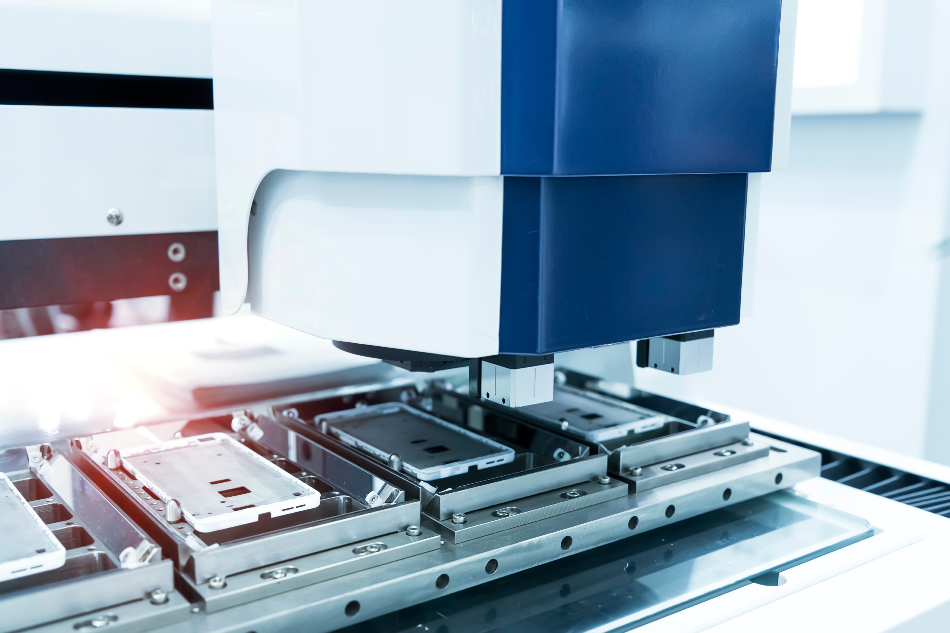Article Updated 28th July 2021
What is a Nano alloy
Nano-alloy is a broad term used to describe two, or sometimes multiple component nanoparticles, made of atomic species that are metals. A nano-alloy can be what is referred to as a very small “cluster”, containing only a few atoms, or a large nanoparticle with a diameter of a few hundred nanometers.

Image Credit: Asharkyu/Shutterstock.com
Nano-alloys can be intermixed arrangements of their constituent elements, as in solid solutions and ordered alloys, or phase-separated arrangements, giving, for example, core-shell and Janus particles (a nanoparticle with two properties). As with most nanotechnology, the advantages are the distinct new properties a material may demonstrate at the nano-scale as well as the enhancement to a material’s strength to weight capabilities or thermal or electrical conductivity. The addition of nanoalloys can create the desired microstructure to provide the features required in a material, adding strength or flexibility. Nano alloys are also valued as heterogeneous catalysts in several processes.
However, beware, Nano is a buzzword, and the term nano alloy is finding its way into products that have little or no relationship with nanotechnology.
Nanotechnology and mobile devices
Mobile devices have benefited significantly from innovations in nanotechnology, already enhancing the performance of batteries and appears in coating for screens. It has even found its way into the microprocessors and the OLED screen is a product of nanotechnology research. Nanotechnology and the use of nanoalloys are at the forefront of mobile devices development, as manufacturers continue the trend towards thinner, lighter and ultimately flexible devices. They will also be major components of a new generation of wearable technology that we have recently discovered.
Until very recently, glass and aluminum have been the major structural component of mobile devices and possibly the most fragile. However, nanotechnology allows developers to create new alloy architectures that can create new aluminum alloys that are as strong as steel, but retain a degree of flexibility that resists breaking. This technique can be used on other metal alloys where influencing the structure of the alloy at nanoscale solves some of the issues associated with the material in its bulk counterpart.
Nanoalloys – towards a more efficient battery
Nano alloys are due to play a part in solving the problem of demand for more efficient lithium-ion battery technology. Researchers have been investigating several options for replacing the conventionally used graphite or silicon anode in batteries with nano-alloy composites. Researchers at North Carolina Agricultural and Technical State University used a silicon nanoalloy composite to enhance battery performance.
Researchers at the Cockrell School of Engineering have developed a new tin-aluminum alloy anode that can make a battery lighter, more compact and able to hold more energy. Using the tin at a micrometer scale does not work, but at the nanoscale, these problems are overcome. The research points to not only a more efficient battery, but one that is faster and cheaper to produce.
A better alloy for connecting components
Another vital and often overlooked component in mobile devices is the interconnect material, usually solder. Lockheed Martin Advanced Technology Center developed a nano copper material that can be used as an ink or paste in electronic devices. It facilitates miniaturization due to its enhanced thermal and electrical conductivity properties and also resolves the issues of oxidization in current lead-free solder.
The developer Alfred Zinn formed Kuprion a company that has commercialized the technology.
Materials from science fiction
Transparent Aluminium was a material born out of science fiction, having made an appearance in Star Trek, but developers have shown that metals engineered at the nanoscale can be transparent. Research has shown a method by which transparent metals can be obtained. Using nanoparticles or metal nanowires, scientists have created a meta-material made of metal but imitating glass; transparent in the infrared but with the conductivity of a metal.
"The idea began as a game after watching an episode of Star Trek, where the Enterprise crew used transparent aluminum to transport and save a whale," explains Vincenzo Giannini, CSIC researcher at the Institute for Structure of Matter, who participated in the study.
"The idea was to see if there could be transparent metal. The answer is yes and we have been able to demonstrate it theoretically and experimentally," adds Giannini. Their work is significant in the manufacture of mobile devices where the casing and the touch screen could be formed from a “transparent metal” that could also contain many of the devices’ components
The digital human?
Perhaps the ultimate objective in mobile technology is to make it flexible, wearable, possibly even implantable. The developments in nanoalloys in combination with graphene are leading towards flexible and conductive materials that can be conventionally printed or produced using additive manufacturing methods. These developments bring other technology from science fiction ever closer with the possibility of smart contact lenses and mobile tech on a tattoo. The characteristics of nanoalloys are proving exciting areas for research into possible applications to mobile technology, making it smaller, more efficient, ultimately cheaper and longer-lasting.
Sources
https://www.researchgate.net/publication/222755954_Nano-alloy_anode_for_lithium_ion_batteries
https://newatlas.com/cheap-alloy-storage-lithium/52031/
https://www.kuprioninc.com/
https://www.researchgate.net/publication/253343019_Transparent_Aluminum_Nanomesh_Electrode_Fabricated_by_Nanopatterning_Using_Self-Assembled_Nanoparticles
Disclaimer: The views expressed here are those of the author expressed in their private capacity and do not necessarily represent the views of AZoM.com Limited T/A AZoNetwork the owner and operator of this website. This disclaimer forms part of the Terms and conditions of use of this website.